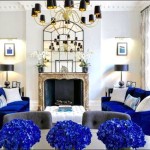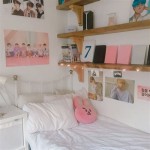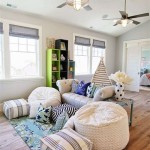How To Decorate With Carpet: Elevating Interior Design Through Texture and Color
Carpet, often considered a flooring staple, offers a wealth of design possibilities beyond mere functionality. Its versatility extends to defining spaces, enhancing acoustics, and introducing warmth and texture to interior environments. Strategic use of carpet can significantly impact the overall aesthetic and ambiance of a home or commercial space. This article explores techniques for effectively integrating carpet into interior design, focusing on color selection, texture considerations, and spatial arrangement.
Choosing the Right Carpet Color
Color plays a pivotal role in shaping the perception of a room. When selecting carpet color, consider the existing color palette of the space, including wall colors, furniture upholstery, and accent pieces. A harmonious color scheme creates a sense of unity and visual appeal. Neutrals, such as beige, gray, and cream, offer versatility and can serve as a foundation for more vibrant accents. These colors work well in high-traffic areas as they tend to conceal dirt and wear more effectively than lighter hues. However, the specific shade of neutral should complement the existing wall color; a cool gray carpet might clash with warm beige walls.
For those seeking to make a bolder statement, saturated colors like deep blues, greens, or reds can add drama and personality to a room. These colors are particularly effective in spaces designed for relaxation or entertainment, such as living rooms or dens. When using a bold carpet color, it is crucial to balance it with more subdued wall colors and furniture to prevent the room from feeling overwhelming. A monochromatic scheme, using varying shades of a single color, can also be visually appealing, creating a sophisticated and cohesive look.
Consider the impact of natural light on the chosen carpet color. Colors tend to appear lighter in well-lit rooms and darker in spaces with limited natural light. It is advisable to test carpet samples in the specific room where they will be installed, under both natural and artificial lighting conditions, to ensure the color aligns with the desired aesthetic. Furthermore, the undertones of the carpet color should complement the other elements in the room. For example, a carpet with warm undertones should be paired with furniture and accessories that share similar undertones.
Patterns in carpet can introduce visual interest and mask imperfections. Geometric patterns, floral designs, and abstract motifs can add personality to a room and complement the overall design style. However, patterned carpets should be used judiciously, particularly in smaller spaces, as they can visually shrink the room. In larger rooms, patterned carpets can define specific areas and create distinct zones. When selecting a patterned carpet, ensure that the pattern's scale is proportionate to the room's size and that the colors in the pattern complement the existing color scheme.
Understanding Carpet Texture and Pile Height
The texture and pile height of carpet significantly impact its feel underfoot and its overall aesthetic. Carpet textures range from plush and luxurious to durable and practical, each offering distinct advantages and disadvantages. Plush carpets, characterized by their dense, cut-pile construction, provide a soft and comfortable surface. These carpets are ideal for bedrooms and living rooms, where comfort is a primary consideration. However, plush carpets tend to show footprints and vacuum marks more readily than other textures.
Berber carpets, known for their looped pile construction, are exceptionally durable and stain-resistant. These carpets are well-suited for high-traffic areas, such as hallways and family rooms. The looped pile resists crushing and matting, ensuring that the carpet maintains its appearance over time. Berber carpets are available in a variety of colors and patterns, making them a versatile choice for various design styles. However, the looped pile can be more challenging to clean than cut-pile carpets, as dirt and debris can become trapped within the loops.
Cut-and-loop carpets combine cut and looped fibers to create textured patterns. These carpets offer a balance of comfort and durability, making them a suitable choice for a variety of rooms. The textured patterns can conceal dirt and wear, making these carpets a practical choice for busy households. Frieze carpets, characterized by their highly twisted fibers, provide a casual and textured look. These carpets are durable and resist crushing, making them a good choice for high-traffic areas. However, the twisted fibers can make the carpet feel less soft than other textures.
The pile height of carpet also influences its feel and appearance. Higher pile carpets offer a more plush and luxurious feel, but they can be more difficult to clean and maintain. Lower pile carpets are more durable and stain-resistant, making them a better choice for high-traffic areas. When selecting carpet, it is important to consider the intended use of the room and the desired level of comfort and durability. A higher pile carpet might be ideal for a bedroom, while a lower pile carpet would be more suitable for a hallway.
Strategic Room Arrangement with Carpet
Carpet can be used to define spaces and create visual interest within a room. Area rugs, strategically placed on top of existing flooring, can delineate specific zones and add warmth and texture to the space. In living rooms, area rugs can define the seating area, creating a focal point and anchoring the furniture. In dining rooms, area rugs can define the dining space, protecting the flooring from spills and scratches. The size and shape of the area rug should be proportionate to the size and shape of the furniture it is intended to complement.
When selecting an area rug, consider the color and pattern of the existing flooring and furniture. The area rug should complement the existing color scheme and add visual interest without overwhelming the space. A contrasting color or pattern can create a dramatic effect, while a complementary color or pattern can create a more cohesive look. The texture of the area rug should also be considered, as it can add another layer of interest to the room. A plush area rug can add warmth and comfort to a living room, while a durable area rug can protect the flooring in a high-traffic area.
Carpet can also be used to create visual pathways within a room. By strategically placing carpet runners in hallways or along walkways, one can guide the eye and create a sense of flow. Carpet runners can also add warmth and texture to otherwise cold or sterile spaces. When selecting a carpet runner, consider the width and length of the hallway or walkway. The runner should be wide enough to accommodate foot traffic without being too wide as to overwhelm the space. The runner should also be long enough to cover the entire length of the hallway or walkway, creating a continuous visual path.
Custom carpet installations offer further design possibilities. Carpet tiles, for example, allow for the creation of unique patterns and designs. These tiles can be easily installed and replaced, making them a versatile choice for both residential and commercial spaces. Bordered carpets, featuring a contrasting border around the perimeter, can add a touch of elegance and sophistication to a room. The border can be made of a different color, texture, or pattern than the main carpet, creating a visually striking effect.
Finally, the placement of furniture on carpet should be carefully considered. Heavy furniture can leave indentations in carpet, particularly in higher pile carpets. To prevent this, use furniture coasters or furniture pads under the legs of heavy furniture. These pads distribute the weight of the furniture more evenly, reducing the likelihood of indentations. It is also advisable to rotate furniture periodically to prevent excessive wear in specific areas. By taking these precautions, one can ensure that carpet remains in good condition for years to come.

How To Decorate With Al Carpet The Everygirl

Design Inspiration How To Decorate With Area Rugs

7 Creative Ideas For Decorating With Rugs

7 Creative Ideas For Decorating With Rugs

Decorating With Antique Rugs Oriental Persian Rug Home Decor

How To Decorate Your House With Beautiful Carpets

Decorating With Oriental Persian Rugs Emily A Clark

Persian Red Rugs And Carpets Decorating Carpetship

Best Tips For Interior Decorating With Vintage Rugs

Cool And Trendy Ideas From Rugco To Decorate Your Home With Rugs Tapestries







